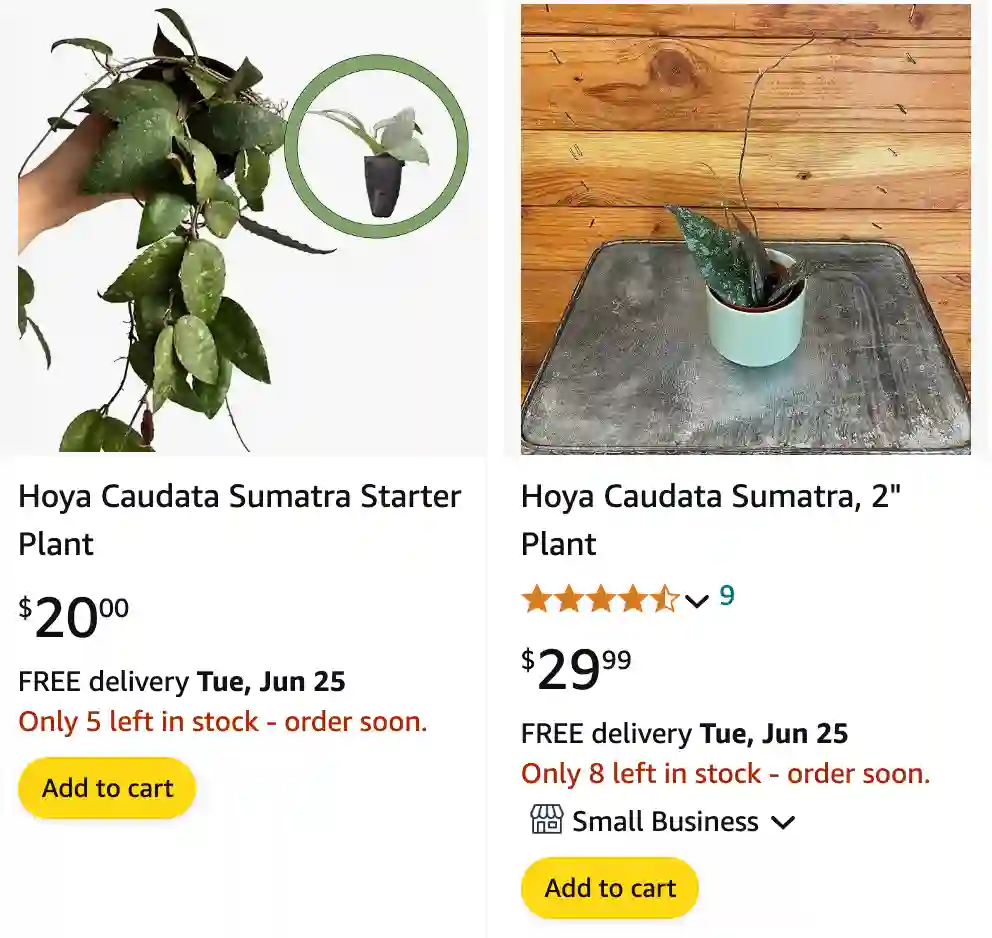
Hoya Caudata: Unveiling the Beauty and Care of This Enchanting Vine
Hi, I’m Ferb Vu, and like many of you, I’m captivated by the world of Hoyas. Today, we delve into the fascinating Hoya Caudata, a plant that enthralls with its stunning foliage and unique blooms.
What is Hoya Caudata?
Hoya Caudata, also known as the Silver Dollar Hoya or Sweetheart Hoya, is a vining epiphyte native to Southeast Asia, particularly Thailand and Malaysia. This captivating climber boasts ovate leaves that taper to a pointed tip, often adorned with a mesmerizing sheen and silvery speckles.
Hoya caudata vs Caudata sumatra
The Sumatra’s leaves are like works of art. They’re a deeper green, splashed with silver markings that dance across the surface. Plus, they have this incredible texture – kind of fuzzy and velvety, adding a whole new dimension to the plant. It’s like the regular Caudata’s more glamorous cousin. Don’t get me wrong, I still adore my original Hoya, but the Sumatra’s got that extra “wow” factor that makes my heart skip a beat every time I see it.
Light and Location:
Hoya Caudata thrives in bright, indirect light. Direct sunlight can scorch the leaves, so avoid south-facing windows. East or west-facing ones with sheer curtains provide the perfect balance. Consider supplementing with grow lights during winter when natural light dwindles.
Water Needs:
Hoya Caudata leans towards the “less is more” approach when it comes to water. Allow the top inch of soil to dry completely before watering again. Overwatering is a cardinal sin, leading to root rot. Signs of thirst include wilting leaves.
Soil and Potting:
For optimal drainage, use a well-aerated potting mix specifically designed for cacti and succulents. Terracotta pots are ideal as they allow excess moisture to evaporate. Repotting is only necessary every 2-3 years, when the plant outgrows its current container.
Humidity:
Hoya Caudata appreciates moderate to high humidity levels (around 60%). Grouping plants together, using a pebble tray, or investing in a humidifier can create a more favorable environment.
Fertilization:
During its active growing season (spring and summer), a diluted liquid fertilizer formulated for houseplants can be applied once a month. Avoid fertilizing during dormancy (fall and winter).
Growth Habit and Training:
Hoya Caudata is a naturally vining plant. You can train it to climb a moss pole, trellis, or allow it to cascade from a hanging basket. Pinching back leggy vines encourages bushier growth.
Common Pests and Diseases:
Mealybugs and scale are occasional nuisances. Neem oil spray or insecticidal soap are effective solutions. Fungal diseases due to overwatering can occur. Ensure proper drainage and air circulation.
Does Hoya Caudata Flower?
Absolutely! Under ideal conditions, mature Hoya Caudata produces clusters of star-shaped blooms. These fuzzy flowers boast white petals with a contrasting red corona and exude a sweet, honey-like fragrance, especially at night.
Comparison with Hoya Carnosa:
Both Hoya Caudata and Hoya Carnosa (the classic Wax Plant) are popular houseplants. Here’s a quick breakdown:
- Leaves: Hoya Caudata has pointed, oval leaves with a silvery sheen. Hoya Carnosa has fleshy, oval leaves with a matte finish.
- Flowers: Hoya Caudata flowers are fuzzy and star-shaped. Hoya Carnosa flowers are smooth and clustered in round umbels.
- Growth: Hoya Caudata is a vining plant. Hoya Carnosa can be bushy or vining.
Propagation:
Hoya Caudata can be propagated through stem cuttings. Take a healthy stem with a few nodes, remove the lower leaves, and dip the cut end in rooting hormone (optional). Plant it in a well-aerated potting mix and keep it moist but not soggy. Provide bright, indirect light and wait patiently for roots to establish, which can take several weeks.
Temperature:
Hoya Caudata prefers warm temperatures between 65-80°F (18-27°C). Avoid exposing it to sudden temperature drops or cold drafts.
Toxicity:
Hoya Caudata is considered mildly toxic to humans and pets if ingested. It’s best to keep it out of reach of children and curious animals.
Dormancy:
During fall and winter, Hoya Caudata experiences a slower growth period. Reduce watering frequency and avoid fertilizing at this time.
Special Features:
- Air Purification: Hoya Caudata helps remove common indoor air pollutants like formaldehyde and benzene.
- Unique Fragrance: The sweet, honey-like scent of its blooms adds another layer of enjoyment to owning this plant.
Advanced Care Tips:
- Supplemental Lighting: If your Hoya Caudata isn’t receiving enough natural light, consider using grow lights to supplement, especially during winter.
- Blooming: Encouraging blooms can be tricky. Consistency with watering, providing bright indirect light, and allowing the plant to become slightly rootbound can sometimes trigger flowering.
Conclusion:
Hoya Caudata is a captivating addition to any plant collection. With its stunning foliage, fragrant blooms, and relatively low-maintenance care requirements, this epiphyte is sure to steal the spotlight in your home. So, provide it with the right environment, and witness its captivating beauty unfold.




